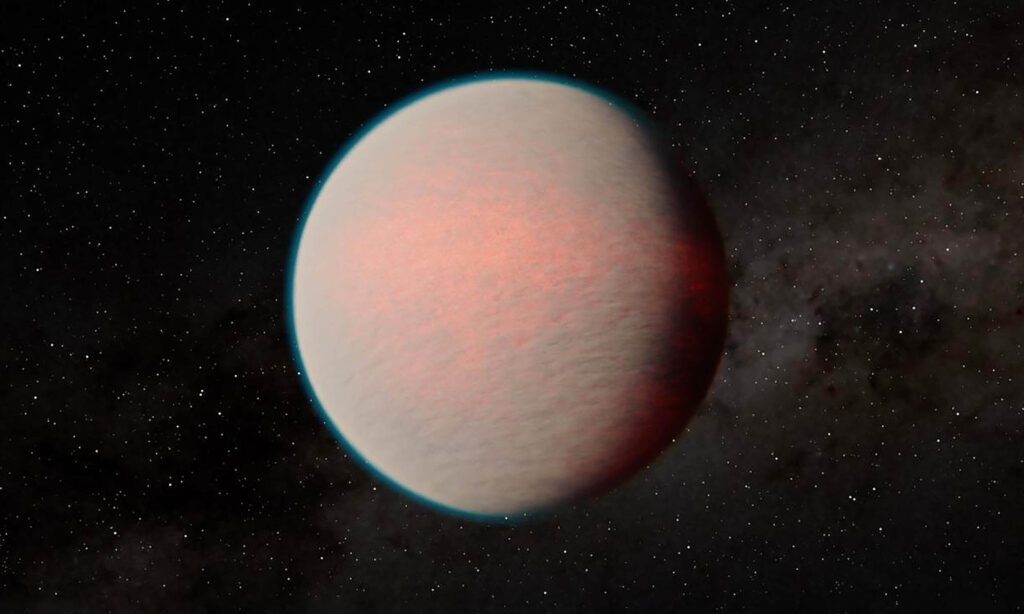Astronomers studying an exoplanet named Enaiposha (GJ 1214 b), located about 47 light-years away, have discovered surprising properties that challenge its previous classification as a typical “mini-Neptune.” Using data from the James Webb Space Telescope (JWST), researchers found that Enaiposha has a thick atmosphere comprised of hydrogen, helium, water, methane, and carbon dioxide, leading them to propose the term “superbebe” to describe it. Unlike typical sub-Neptunes, Enaiposha features a haze that complicates atmospheric analysis and obscures its surface view, similar to Venus but more extreme.
The team detected faint traces of water vapor and signs of carbon dioxide and methane, suggesting a metal-rich atmosphere with unexpected compositions. These findings indicate that Enaiposha might represent a new subtype of exoplanet, posing challenges for current classifications. The haze limits visibility, necessitating further observations to glean more information about the planet’s atmosphere and composition. While Enaiposha is not considered habitable, studying its atmosphere could provide insights applicable to other exoplanets. Future research aims to explore the formation of metal droplets in the atmosphere and how such planets evolve over time. The study was published in the Astrophysical Journal Letters.
Source link


